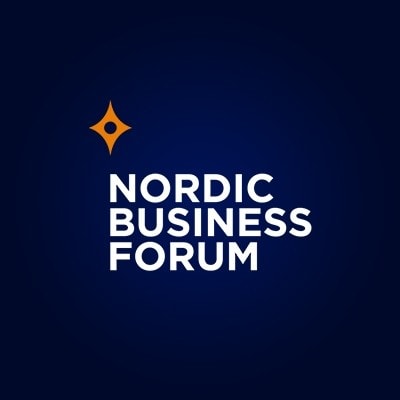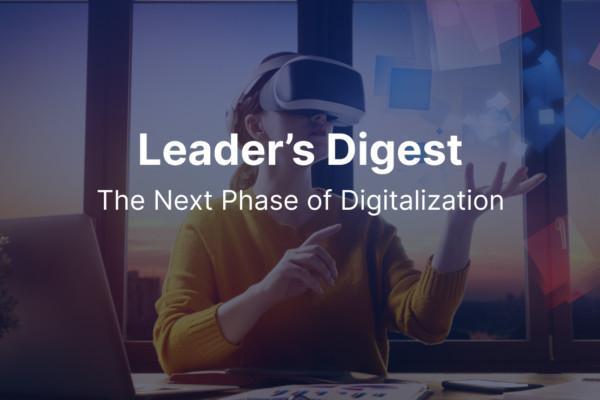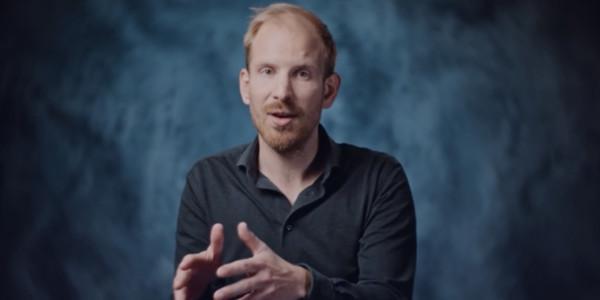22Nov2022
It’s been two months since we gathered for Nordic Business Forum 2022 in Helsinki. Have you gone back to the notes you made? Have you gone through the speech summaries and sketchnotes? Have you turned those ideas into actions? If not, we highly recommend you do that sooner rather than later!
But what were the top ideas and tools? Each participant has a different view on what they felt were the most useful insights from the speakers, depending on their situation and goals. Nevertheless, we want to help you get an idea of what other people picked up from the speakers. Our co-founder Hans-Peter Siefen listed his top practical but also conceptual learnings from the event, and here they are:
Practical Learnings
Customer Effort Score by Zoe Chance
What is “the most underappreciated marketing metric”? According to Yale professor Zoe Chance, it’s the Customer Effort Score (CES). CES measures how much effort it takes for your customer to complete a transaction or resolve an issue.
“It is more predictive of spending and loyalty than customer satisfaction and net promoter scores. With almost 100% accuracy, CES predicts who is going to repurchase and who is not. It’s almost the only metric determining who will give a negative word of mouth and who doesn’t,” she said.
“I felt this was REALLY powerful,” underlined Hans-Peter Siefen.
Practical Tips on Leading a Multicultural Team by Erin Meyer
INSEAD professor and author Erin Meyer talked about her Culture Map concept. It breaks down interpersonal behaviors into 8 scales, where cultures can be placed on a spectrum showing how they tend to interact in relation to other cultures along different dimensions. Her entire speech included plenty of practical tips on how to navigate cultural differences at work.
“Erin’s speech was full of excellent insights on internationalization, leading a multicultural team, and also international sales,” said Hans-Peter.
What If-Tool by Duncan Wardle
The former head of innovation at Disney, Duncan Wardle, shared a few pieces of advice from his creativity toolkit. One of them, which Hans-Peter found especially useful, is the what if-tool. In all simplicity, it just means that you first list the rules of the environment in which you and your business are operating. Then, you should ask the most audacious ‘what if’ questions to think whether it is possible to break or change those rules.
Duncan explained how Walt Disney wanted to make his 1940 cinematic masterpiece Fantasia more interactive for moviegoers. When theater owners were reluctant to implement his ideas, he turned to the idea of creating his own theme park. And that’s how Disneyland was born.
Bullet Point Meetings vs. Campfire Conversations by Jitske Kramer
Corporate anthropologist Jitske Kramer pointed out that while there are various types of interactions, two stand out in the decision-making process.
First, there are transactional interactions, or, as Jitske said, “bullet point meetings”, where people are told what to do. Secondly, we have transformative interactions, which Jitske calls “campfire conversations”. These are deeper conversations, in which participants share their thoughts, are open to hearing what other people say, and transform their ideas if the conversation leads them to think differently.
Campfire conversations are crucial in culture-shaping processes, which is why Hans-Peter felt this was a great practical tool for any team or organization.
Tools for Psychological Safety by Amy Edmondson
Hans-Peter got various practical insights regarding psychological safety from Harvard Professor Amy Edmondson:
- How can you recognize if your own team has psychological safety? You, as a leader, can do a quick check by thinking if you only hear good news, agreement, and progress or do you also hear about the bad news, problems, and requests for help. Especially, if the work your organization does involves uncertainty, it’s most likely a bad sign if all you hear is positive.
- How can leaders make candor and risk-taking possible? The three pieces of advice from Amy were to 1) frame the work, 2) invite participation, and 3) respond productively.
- Why is it so important to welcome bad news? Boeing is just one of the tragic examples of what can happen if bad news, problems, and challenges are not tackled early enough in an organization.
Brand Essentials for the Future by Martin Lindstrom
What are the keys to building a future-proof brand? Hans-Peter thought that brand expert Martin Lindstrom provided three brilliant tips for companies for the future.
- Define your brand’s ethical standards. In addition to having brand purposes and brand values, you need ethical standards. Simulate how far you want to go.
- Focus on one word. A powerful brand can include thousands of messages in one word, such as the word “search” for Google. Clean up your messages and concentrate them into one word.
- Develop your smashables. Build subconscious clues to guide people to your brand in a positive way.
Conceptual Insights
Amy Edmondson: Basics of Psychological Safety
“Especially if you’re not familiar with the concept of psychological safety, Amy provided excellent basics”, said Hans-Peter.
Amy explained that psychological safety basically means feeling safe enough to speak up about mistakes and concerns while being unafraid to bring up ideas and questions too. This security comes from a belief that you will not be punished or humiliated for speaking up.
However, the concept often gets misunderstood, which is why Amy also clarified that psychological safety does not equal job security, freedom from conflict, permission to slack off, or an excuse to complain.
She underlined that there is no trade-off between having high standards and psychological safety. In fact, the ideal situation is that a team has both high psychological safety and high-performance standards.
Amy Edmondson: Diversity Needs Psychological Safety
“Amy’s insight on when diversity brings results was also super valuable”, noted Hans-Peter.
According to Amy, diversity is essential, but it alone doesn’t cut it. She briefly shared the results of a study on 62 innovation teams in the pharmaceutical space which implied that diversity alone is not enough to guarantee performance. The diverse teams that had managed to create psychological safety in their team thrived while others did not. So, the winning combination seems to be diversity and psychological safety.
Yuval Noah Harari: Don’t Be Optimistic or Pessimistic—Be Responsible
Hans-Peter felt that a powerful idea to prepare for the future came for the historian and author Yuval Noah Harari. He urged us all to focus on responsible actions today.
“We shouldn’t be optimistic or pessimistic, but responsible. What will happen in the future is the direct outcome of our decisions today and in the coming years. So, I hope we make responsible decisions”, Yuval highlighted.

 by:
by: 
